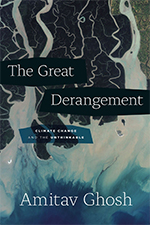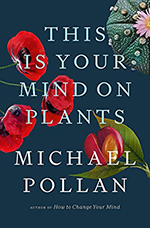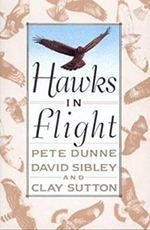11 October 2022
Book report
Posted by Callan Bentley
The Great Derangement: Climate Change and the Unthinkable, by Amitav Ghosh
 Marcia Bjornerud put me onto this one. An interesting book that explores the roots and results of our response to climate change. The author, an acclaimed Indian novelist, is particularly interested in the unwillingness of artists and novelists to grapple with climate change, citing this failure to engage as evidence of a great derangement in society: society’s awareness of climate change but unwillingness to change our ways or really even talk about it much. To Ghosh, novelists and other literary artists are critical to helping society process the issues of the moment. Where are the great climate change novels, he asks? Or is writing about climate change automatically writing something that is not a great novel? Where does the split between science fiction (or even “cli fi”) and the rest of the literary world come from? What forces maintain it? Are novelists as culpable in perpetuating the climate-harming status quo as the politicians who are so blatantly in the pocket of the fossil fuel industry? Ghosh is keen in particular to explore the Asian side of the response (or lack thereof), examining the issue from the perspective of India, its colonial history, its population, its economic development, and its literature. To me, this intentional perspective-setting is one of the most important things about Ghosh’s book. It allows westerners like me clear insight into the various factors that influence the thinking of people who dwell in a culture that stems from very different roots than my own, has been strongly shaped by colonial forces, but will suffer the impacts of climate change every bit as acutely despite being far less culpable for emitting the causative carbon atoms in the first place.
Marcia Bjornerud put me onto this one. An interesting book that explores the roots and results of our response to climate change. The author, an acclaimed Indian novelist, is particularly interested in the unwillingness of artists and novelists to grapple with climate change, citing this failure to engage as evidence of a great derangement in society: society’s awareness of climate change but unwillingness to change our ways or really even talk about it much. To Ghosh, novelists and other literary artists are critical to helping society process the issues of the moment. Where are the great climate change novels, he asks? Or is writing about climate change automatically writing something that is not a great novel? Where does the split between science fiction (or even “cli fi”) and the rest of the literary world come from? What forces maintain it? Are novelists as culpable in perpetuating the climate-harming status quo as the politicians who are so blatantly in the pocket of the fossil fuel industry? Ghosh is keen in particular to explore the Asian side of the response (or lack thereof), examining the issue from the perspective of India, its colonial history, its population, its economic development, and its literature. To me, this intentional perspective-setting is one of the most important things about Ghosh’s book. It allows westerners like me clear insight into the various factors that influence the thinking of people who dwell in a culture that stems from very different roots than my own, has been strongly shaped by colonial forces, but will suffer the impacts of climate change every bit as acutely despite being far less culpable for emitting the causative carbon atoms in the first place.
Vesper Flights, by Helen Macdonald
 Helen Macdonald wrote the critically acclaimed memoir H is for Hawk some years ago. It was good, so I was pleased to see this compilation released in 2020. Vesper Flights is a collection of essays, some of which have been previously published in various periodicals. Most of them involve birds, but all involve the human relationship to the natural world. Macdonald is a talented, instinctive essayist, and I found that I enjoyed Vesper Flights more than H is for Hawk because of how tidy and efficient each of these pieces felt. The title pieces is about swifts, which engage in a strange behavior that has them swirling skyward en masse to tremendous heights, gaining a more expansive view with altitude. Macdonald draws a parallel to the human ability to forecast the future, including the looming storm of climate change. Macdonald seems happiest in nature, making minute and detailed observations about ants and orioles and herons and plants. But none of these essays are “just” natural history; each bird or place has some lesson to teach us about ourselves, and the change we have induced in the natural world or the changes the natural world induces in us. Very palatable and digestible, this book would be a great place to start reading Macdonald.
Helen Macdonald wrote the critically acclaimed memoir H is for Hawk some years ago. It was good, so I was pleased to see this compilation released in 2020. Vesper Flights is a collection of essays, some of which have been previously published in various periodicals. Most of them involve birds, but all involve the human relationship to the natural world. Macdonald is a talented, instinctive essayist, and I found that I enjoyed Vesper Flights more than H is for Hawk because of how tidy and efficient each of these pieces felt. The title pieces is about swifts, which engage in a strange behavior that has them swirling skyward en masse to tremendous heights, gaining a more expansive view with altitude. Macdonald draws a parallel to the human ability to forecast the future, including the looming storm of climate change. Macdonald seems happiest in nature, making minute and detailed observations about ants and orioles and herons and plants. But none of these essays are “just” natural history; each bird or place has some lesson to teach us about ourselves, and the change we have induced in the natural world or the changes the natural world induces in us. Very palatable and digestible, this book would be a great place to start reading Macdonald.
This is Your Brain on Plants, by Michael Pollan
 A fairly typical Michael Pollan book – digging into plant science and lore and exploring the botanical world’s relationship to the human world. This volume is very much akin to The Botany of Desire, with the caveat that it’s much more focused on drugs. Specifically, he focuses on opium, caffeine, and mescaline – compounds produced respectively by a poppy, the coffee and tea bushes, and a small cactus. The typical Pollan formula is to grow a plant, write about its history and his care of it, then consuming it and noting the results. In this case, in the 1990s, he grows opium poppies, which were then sold out of commercial seed catalogs, and ultimately consumes a tea he brews from the seeds. This is, according to the letter of the law, illegal, despite the fact that growing the seeds for aesthetics in your garden is totally fine. He gets very paranoid about the fraught legal situation he has engendered, and much of the piece centers on the War on Drugs and how the federal government could have confiscated his house, etc. The caffeine section is perhaps the most interesting, since caffeine is the mostly widely used “drug” in the world – a stimulant that something like half the world’s population is addicted to. And Pollan inverts his usual formula by denying himself caffeine, rather than consuming it. He then documents the brain fog and lethargy that result, and after three months of quitting, what it feels like to go back to drinking coffee again. The mescaline section is more anthropological, investigating Native American use of the peyote cactus as part of tribal-identity-affirming religious practices, and what it means for a white guy like him to nose his way into their traditions. The COVID-19 pandemic strikes during the middle of his reporting on mescaline, and it ends up impacting his plans in ways that aren’t really ideal.
A fairly typical Michael Pollan book – digging into plant science and lore and exploring the botanical world’s relationship to the human world. This volume is very much akin to The Botany of Desire, with the caveat that it’s much more focused on drugs. Specifically, he focuses on opium, caffeine, and mescaline – compounds produced respectively by a poppy, the coffee and tea bushes, and a small cactus. The typical Pollan formula is to grow a plant, write about its history and his care of it, then consuming it and noting the results. In this case, in the 1990s, he grows opium poppies, which were then sold out of commercial seed catalogs, and ultimately consumes a tea he brews from the seeds. This is, according to the letter of the law, illegal, despite the fact that growing the seeds for aesthetics in your garden is totally fine. He gets very paranoid about the fraught legal situation he has engendered, and much of the piece centers on the War on Drugs and how the federal government could have confiscated his house, etc. The caffeine section is perhaps the most interesting, since caffeine is the mostly widely used “drug” in the world – a stimulant that something like half the world’s population is addicted to. And Pollan inverts his usual formula by denying himself caffeine, rather than consuming it. He then documents the brain fog and lethargy that result, and after three months of quitting, what it feels like to go back to drinking coffee again. The mescaline section is more anthropological, investigating Native American use of the peyote cactus as part of tribal-identity-affirming religious practices, and what it means for a white guy like him to nose his way into their traditions. The COVID-19 pandemic strikes during the middle of his reporting on mescaline, and it ends up impacting his plans in ways that aren’t really ideal.
Hawks in Flight, by Pete Dunne, David Sibley, and Clay Sutton
 Fall is raptor migration season. On the east coast, a lot of raptors (hawks, falcons, eagles, etc.) utilize updrafts along our northeast/southwest-trending mountain ridges as a free source of energy to stay aloft, cruising toward warmer climes in great numbers. Hawk Mountain, Pennsylvania is a nationally-renowned location for viewing migrating raptors in the fall, but closer to me is the observation station at Rockfish Gap. I’ve been visiting their hawk watch regularly since I moved to Charlottesville, and this past month, I volunteered at an open house there, representing the Piedmont Virginia Bird Club. Hawk watching at one of these ridge sites is a curious activity: most of the birds are high up, and can only be identified (a) through optical magnification and (b) with a fair amount of experience. Seasoned hawk watchers use fairly subtle aspects of a bird’s “gestalt” such as how prominent the head is relative to the tail, or whether the trailing edge of the wing has a more “S” shaped profile vs. a straighter line. Do its shoulders appear “hunched”? Does it flap rapidly, languidly, or powerfully? These are not obvious features to the novice, and while I’m no pro, I have learned a lot from spending time among the experienced hawk watchers. I’m better at it now than I was a year ago. And this book took my conceptual understanding to a new level: Detailed, evocative writing by Pete Dunne about the sorts of features to be receptive to are paired with black and white drawings by illustrator David Sibley, and a substantial section of photographs by Clay Sutton. I feel more confident – though I’ll admit that even this morning, a raptor flew over and I got to look at it for all of two seconds, failing to apply some of the basic lessons imparted by Hawks in Flight. Oh well, I’ll keep trying!
Fall is raptor migration season. On the east coast, a lot of raptors (hawks, falcons, eagles, etc.) utilize updrafts along our northeast/southwest-trending mountain ridges as a free source of energy to stay aloft, cruising toward warmer climes in great numbers. Hawk Mountain, Pennsylvania is a nationally-renowned location for viewing migrating raptors in the fall, but closer to me is the observation station at Rockfish Gap. I’ve been visiting their hawk watch regularly since I moved to Charlottesville, and this past month, I volunteered at an open house there, representing the Piedmont Virginia Bird Club. Hawk watching at one of these ridge sites is a curious activity: most of the birds are high up, and can only be identified (a) through optical magnification and (b) with a fair amount of experience. Seasoned hawk watchers use fairly subtle aspects of a bird’s “gestalt” such as how prominent the head is relative to the tail, or whether the trailing edge of the wing has a more “S” shaped profile vs. a straighter line. Do its shoulders appear “hunched”? Does it flap rapidly, languidly, or powerfully? These are not obvious features to the novice, and while I’m no pro, I have learned a lot from spending time among the experienced hawk watchers. I’m better at it now than I was a year ago. And this book took my conceptual understanding to a new level: Detailed, evocative writing by Pete Dunne about the sorts of features to be receptive to are paired with black and white drawings by illustrator David Sibley, and a substantial section of photographs by Clay Sutton. I feel more confident – though I’ll admit that even this morning, a raptor flew over and I got to look at it for all of two seconds, failing to apply some of the basic lessons imparted by Hawks in Flight. Oh well, I’ll keep trying!
_______________________________
* I also re-read Patrick O’Brian’s Master and Commander, and Peter Brannen’s The Ends of the World over the past couple of weeks – both as good as ever!


 Callan Bentley is Associate Professor of Geology at Piedmont Virginia Community College in Charlottesville, Virginia. He is a Fellow of the Geological Society of America. For his work on this blog, the National Association of Geoscience Teachers recognized him with the James Shea Award. He has also won the Outstanding Faculty Award from the State Council on Higher Education in Virginia, and the Biggs Award for Excellence in Geoscience Teaching from the Geoscience Education Division of the Geological Society of America. In previous years, Callan served as a contributing editor at EARTH magazine, President of the Geological Society of Washington and President the Geo2YC division of NAGT.
Callan Bentley is Associate Professor of Geology at Piedmont Virginia Community College in Charlottesville, Virginia. He is a Fellow of the Geological Society of America. For his work on this blog, the National Association of Geoscience Teachers recognized him with the James Shea Award. He has also won the Outstanding Faculty Award from the State Council on Higher Education in Virginia, and the Biggs Award for Excellence in Geoscience Teaching from the Geoscience Education Division of the Geological Society of America. In previous years, Callan served as a contributing editor at EARTH magazine, President of the Geological Society of Washington and President the Geo2YC division of NAGT.